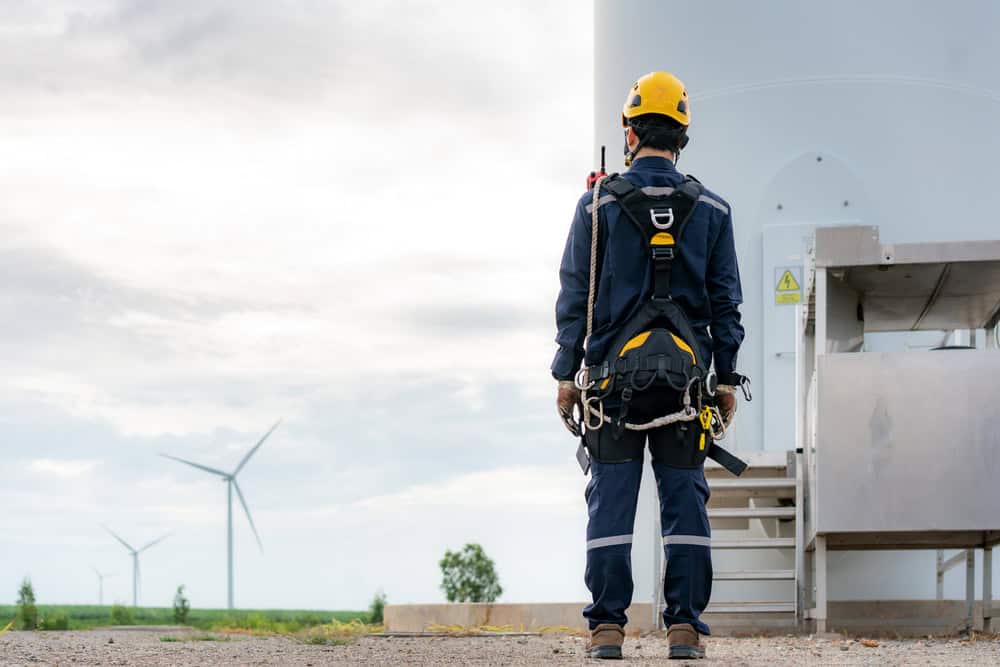There is no doubt that sustainability remains a critical component of long-term success and resilience. This blog by Hays discusses the current sustainability trends on the agenda.
What are some of the key trends affecting sustainability today?
Ten years ago, nearly 200 countries pledged their support to the Paris Agreement: a series of environmental measures designed to combat climate change and rising temperatures. Fast forward to today, and the importance of sustainable business practices and greener economies has only become more pressing – but also increasingly polarised.
This year saw the US withdraw from the Paris Agreement, even as climate-induced wildfires scorched their way across Southern California. And across the wider corporate sphere, certain organisations have rolled back their green policies as they contend with economic uncertainty and geopolitical disruptions.
However, most businesses still recognise that sustainability remains a critical component of long-term success and resilience. As companies strive to meet the demands of a changing world, understanding and adapting to current sustainability trends, and accessing the talent needed to respond to them, is essential.
Embracing climate transition plans (CTP)
Despite concerns that global cooperation on climate change is weakening, the need for greater climate resilience is stronger than ever. The increased frequency of extreme weather events and the tangible impacts of rising temperatures, mean that organisations must develop strategies to mitigate risks and adapt to new realities.
Many organisations are therefore seeking to develop climate transition plans (CTPs), outlining their decarbonisation strategies, climate governance, and policy commitments. To support credible CTPs, organisations should bring onboard professionals well-versed in the latest reporting standards and regulations, but also with the transferable skills required to persuade and influence key stakeholders when putting plans in place.
Bridging the green investment gap
Green finance has emerged as a critical issue, with developing nations struggling to access the required funding, technology, and resources needed to mitigate climate impacts. A global investment of up to USD 6.7 trillion per year will be needed by 2030 to meet the challenge of climate change, according to the Independent High-Level Expert Group on Climate Finance, a group of leading economists.
In late 2024, the UN Climate Change Conference (COP29) established a goal to triple finance for developing nations – from USD 100 billion annually to USD 300 billion – by 2035. While this sum falls short of the trillions predicted to be required to achieve climate equity on the global stage, it could help push green finance into the broader corporate lexicon; all the while creating investment for the green economy, and a wave of potential green job opportunities.
Backing biodiversity in business
Although climate change is better understood – and more comprehensively enshrined in law – protecting biodiversity and ecosystems is becoming a business priority. Organisations are recognising the value of natural capital and the need to preserve ecosystems that provide essential services for both businesses and local communities.
Moreover, biodiversity regulations are only growing in prominence and have a marked influence over planning and land management; not least the biodiversity net-gain (BNG) or the UK government’s commitment to global targets, such as 30by30. Additionally, frameworks such as the Task Force for Nature-related Finance Disclosure (TNFD) are upping the ante for nature-related disclosure.
As more organisations look to harmonise their business operations with nature, biodiversity professionals – including those with an expertise in biodiversity net gain or natural capital – will likely see greater demand in the sustainability sector in the coming year.
Enabling sustainable supply chains
Disruptive climate events, the threat of tariffs, and continued geopolitical tensions, have brought the need for more sustainable supply chains into sharp focus. Greener supply chains are beneficial for the environment and communities, but they are also a crucial means of ensuring long-term business viability.
To meet their ESG goals, organisations must pay even closer attention to sourcing materials responsibly, reducing emissions in transportation, and promoting fair labour practices among suppliers. Sourcing candidates with experience in sustainable supply chain management and ethical sourcing could prove a solid investment, while collaborating with suppliers who share the same sustainability values, and investing in technologies that enhance supply chain transparency, can further support efforts in this space.
Putting the ‘AI’ in sustainability
AI and advanced data solutions are constantly increasing in sophistication, enabling organisations to optimise resource use, enhance operational efficiency, and better understand their social impact and performance. And with the UK seeking to become an AI “superpower”, greater investment and infrastructure may provide the platform to explore more complex AI solutions.
Underscoring the growing dynamic between AI and sustainability, our research of 500 C-suite professionals revealed Chief AI Officer and Chief Sustainability Officer to be the two most influential executive roles in the coming years, and we can expect greater synergy between tech and green leaders.
Across the board, organisations should continue to seek candidates with skills in data analytics, software development, and emerging technologies. Moreover, encouraging a culture of innovation, and providing opportunities for employees to experiment with new solutions, can also foster technological advancements that further sustainability goals.
Revamping your green talent strategies
Understanding and navigating these sustainability trends will require a pipeline of green expertise, yet a persistent green skills gap necessitates a different approach to talent acquisition.
Here are some key strategies to keep in mind:

- Tap into undiscovered talent pools – along with overcoming skills gaps, hiring overlooked candidates is a proven way of embedding inclusive workplaces and creating a workforce more representative of the people you provide services for, while also gathering the diversity of perspectives needed to tackle sustainability’s complex challenges.
- Consider hiring for potential, rather than experience – when linked with the strategy above, you’ll significantly broaden your potential talent pool and develop an adaptable workforce. Our salary guide identified communication and interpersonal skills as being the most in demand soft skill within sustainability, reflecting the growing impetus to persuade key stakeholders and convey complex information to a broader audience.
- Prioritise transparency during the hiring process – in this era of greenwashing, professionals are increasingly critical of organisations’ sustainability credentials. And with two thirds (66%) of employees saying they decided to leave a job because it didn’t match the expectations they had during the interview and application process, it’s vital that you can accurately outline. By aligning hiring and talent acquisition strategies with this year’s emerging sustainability trends, companies can build a workforce that is committed to driving sustainable growth and innovation.
Author: Rebecca Booth, National Specialism Director at Hays UK
Image credits: Shutterstock
Related articles

Transferable skills: essential sustainability competencies to master

Making your first ESG hire: how to get it right

